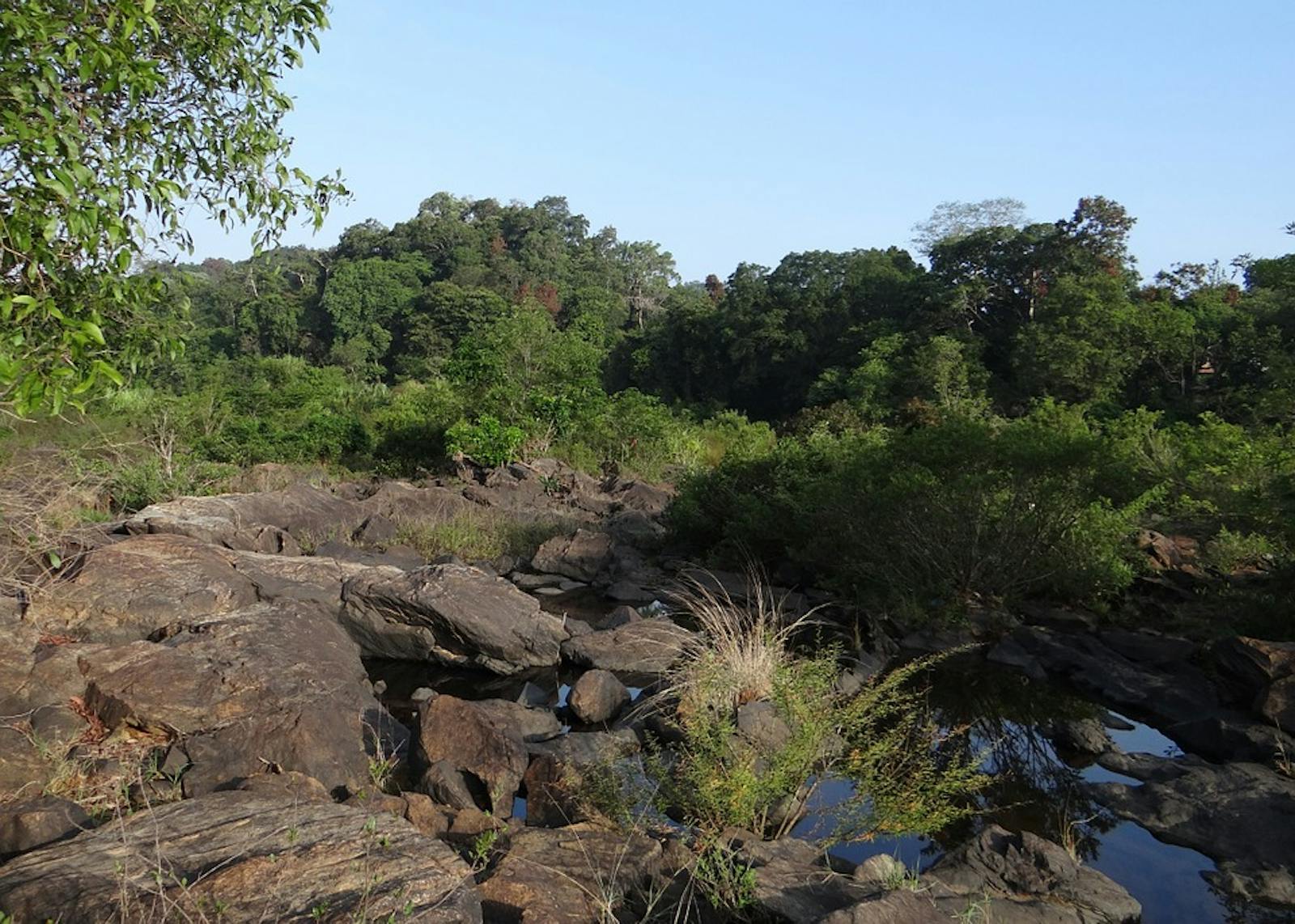Malabar Coast Moist Forests
The ecoregion’s land area is provided in units of 1,000 hectares. The protection goal is the Global Safety Net (GSN1) area for the given ecoregion. The protection level indicates the percentage of the GSN goal that is currently protected on a scale of 0-10.
Bioregion: Indian Tropical Coastal Forests (IM2)
Realm: Indomalaya
Ecoregion Size (1000 ha):
3,554
Ecoregion ID:
242
Protection Goal:
15%
Protection Level:
2
States: India
For over 5,000 years the Malabar Coast was a region of major international trading and commerce with ancient Mesopotamia, Egypt, Greece, Rome, Jerusalem and the Arab world, and through these millennia, most of the natural forests have been cleared. But a re-creation of the historic forest landscapes suggests that it was a narrow, lush, continuous swathe of rain forest stretching for over 1,400 km along the western coast of the Indian Subcontinent, from the present-day city of Mumbai and its 18 million people all the way to the southern tip of India.
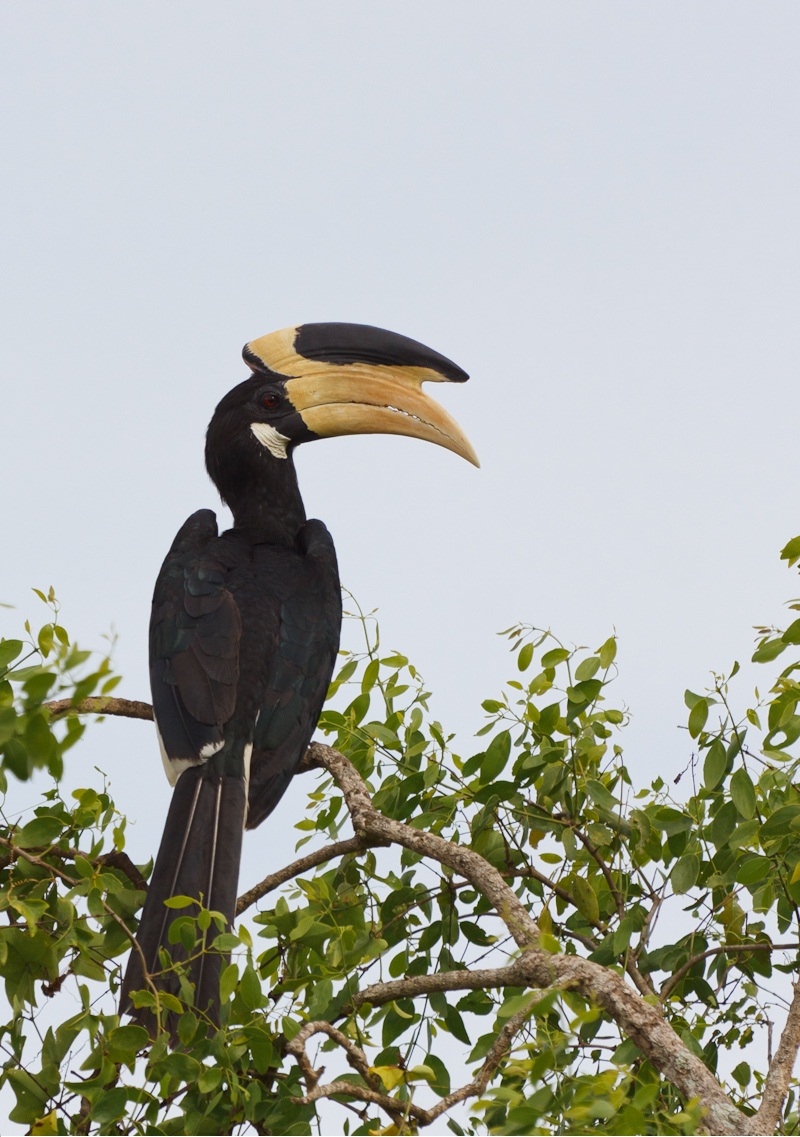
The flagship species of the Malabar Coast Moist Forests ecoregion is the Malabar pied hornbill. Image credit: Creative Commons
The forests were once inhabited by tigers, Asian elephants, common leopards, and wild dogs. Raucous populations of large black and white Malabar pied hornbills and great hornbills with over-sized yellow bills would have been fighting for fruit in the canopies of tall trees. Sadly, today very little of these forests and their biodiversity remains, victims to the Human Enterprise along this coast for millennia.
The ecoregion extends from the coast to the 250 m elevation contour of the steep Western Ghats Mountains a few kilometers inland. The paleogeological origins of this ecoregion go back to Gondwanaland, the supercontinent of southern continental masses that broke apart over 150 million years ago. The plate with the Deccan Plateau drifted northwards to collide with the northern Eurasian continent and formed the Indian subcontinent.
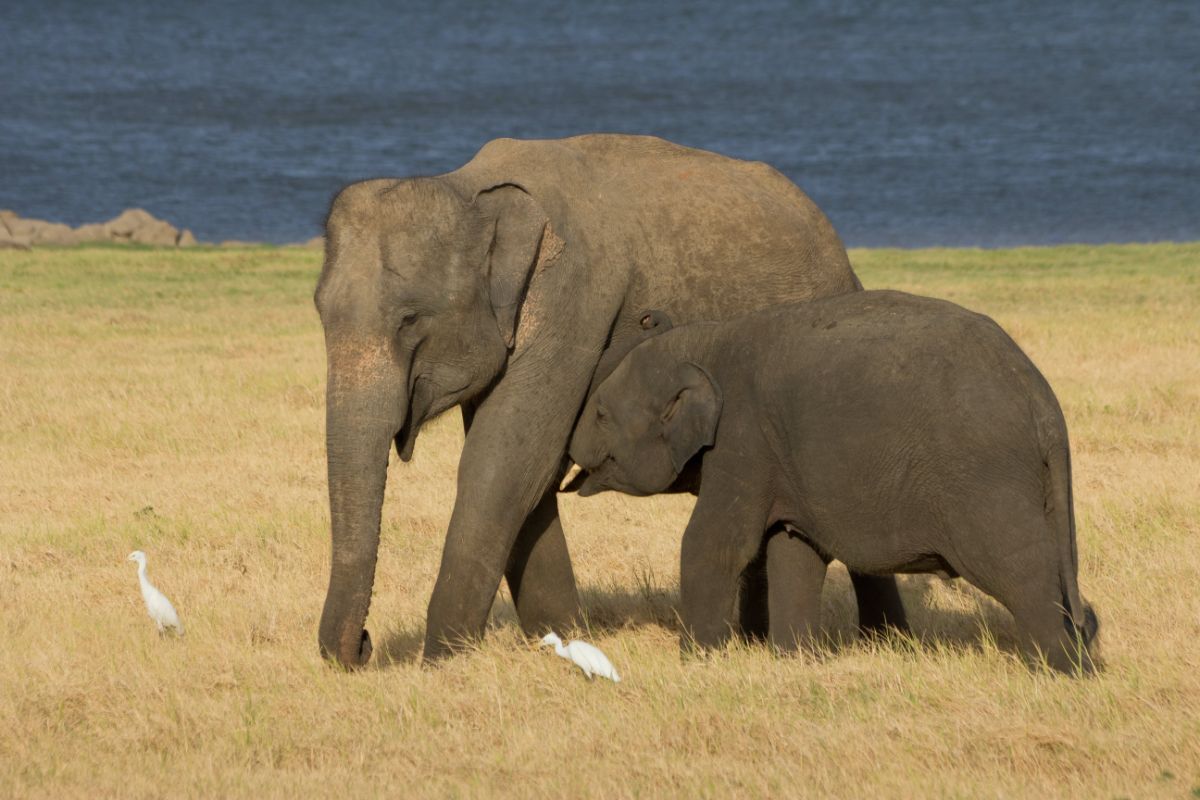
Asian elephants. Image credit: Carlos Delgado, Creative Commons
The Western Ghats Mountains now intercept the monsoons from the southwest and force these winds up the mountain sides. As the moisture-laden winds rise and cool they release rain, a process known as orographic rainfall, which falls on the western slopes and the lowlands. Over 2,500 mm of annual rainfall and abundance of water that flows down from the mountains create wet conditions in the lowlands that influence the vegetation.
The original tropical evergreen forests have now largely been replaced by a semi-deciduous vegetation, mostly because of the influence of plantation trees such as teak, or forest degradation. The characteristic trees are species of genera Tetrameles, Stereospermum, Ficus, Dysoxylum, Pterocarpus, Terminalia, Dalbergia, Madhuca, and Mangifera (wild mango). Myristica swamps and the inland lagoons[ii] are distinct, localized habitats that are now disappearing, mostly being converted to coconut and areca nut plantations or filled and occupied by people.
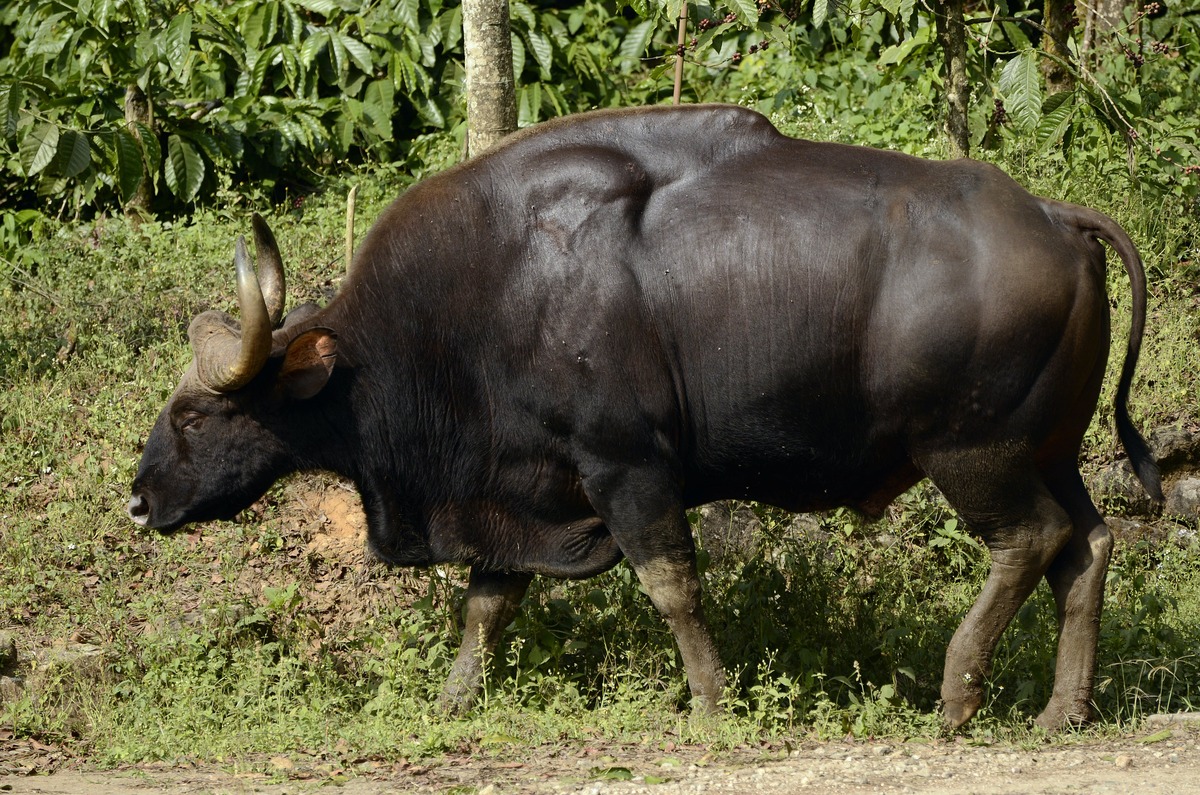
Guar. Image credit: Creative Commons
Almost 100 mammal species have been recorded from this ecoregion, including a single endemic species, the Kerala rat, or Ranjini’s field rat. Other species have wider distributions within India and further in Asia. Some of the species that can still be conserved in this ecoregion include larger mammals such as gaur, wild dog, and sloth bear, and also smaller species such as the arboreal or tree-dwelling slender loris that needs intact forests to survive. The ecoregion has an estimated 280 bird species, including four species of hornbill: the Malabar grey hornbill, Indian grey hornbill, Malabar pied hornbill, and the great hornbill.
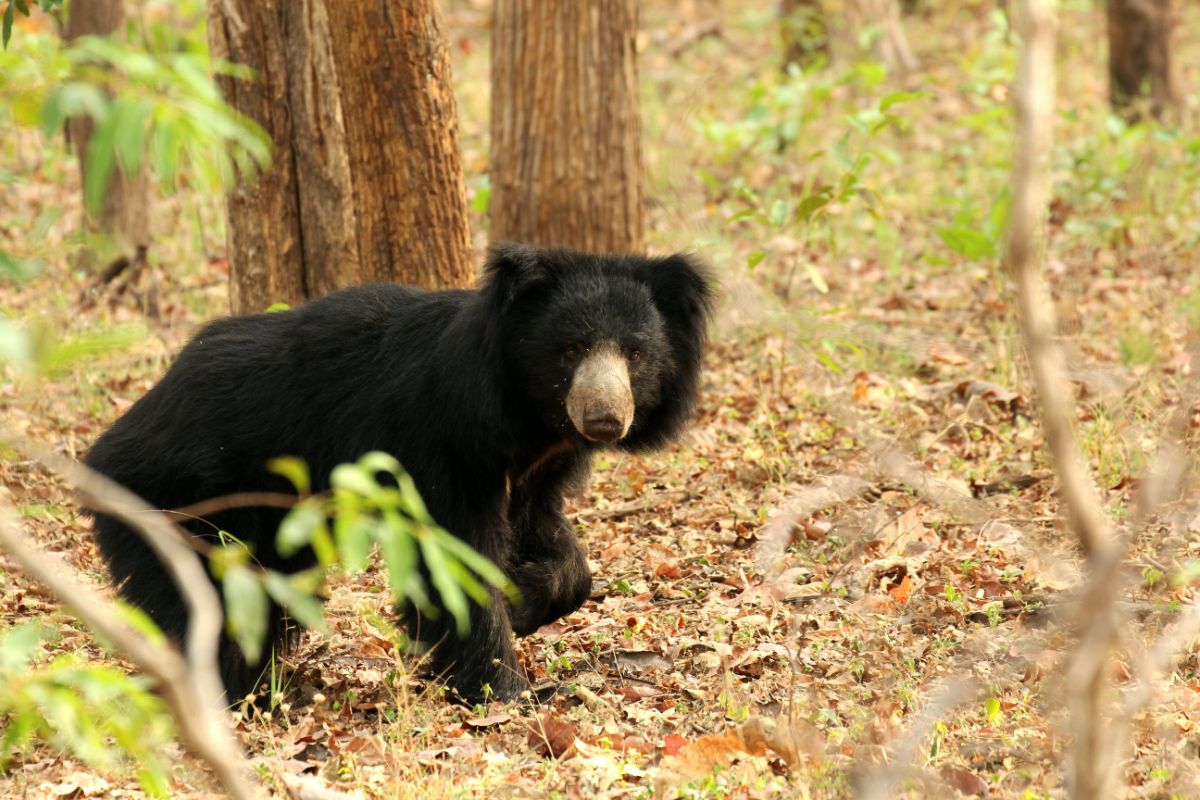
Sloth bear. Image credit: David Raju, Creative Commons
The ecoregion’s natural habitat has been extensively cleared or converted to coconut, rubber, and timber plantations and rice paddies, and hardly any measurable extents of intact forest habitat now exists. The protected areas cover just over 1,200 km2, but some traditional sacred groves still support important species.
Thus, the recommended priority conservation actions are to: 1) promote conservation of traditional sacred groves and prevent any conversion; 2) identify and secure any remaining patches of Myristica swamps for conservation, including through outright purchases;[iv] and 3) engage local communities as conservation stewards.
Citations
1. Wikramanayake, E, E. Dinerstein, et al. 2002. Terrestrial Ecoregions of the Indo-Pacific: A Conservation Assessment. Island Press.
2. Bawa, K.S., Das, A., Krishnaswamy, J., Karanth, K.U., Kumar, N.S. and Rao, M., 2007. CEPF Western Ghats and Sri Lanka ecosystem profile.
3. Biogeographic Areas of Kerala. Published by the Wildlife Wing of the Forest Department of Kerala. Unpubl. http://www.forest.kerala.gov.in/images/abc/bgareaskerala.pdf
